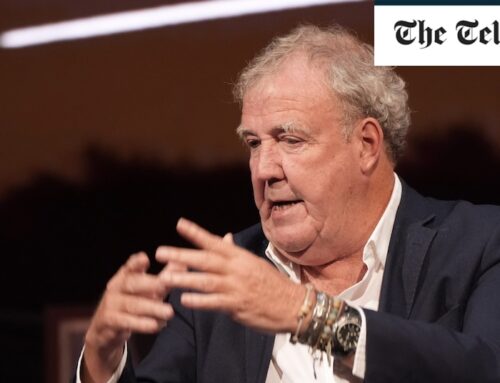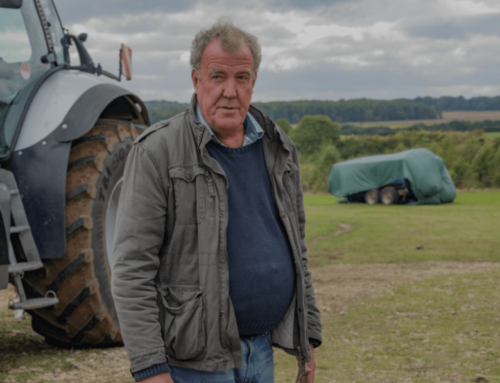Illinois passed an ambitious climate act 3 years ago. But it’s struggling to meet clean energy goals.
October 20, 2024
Driving down a quiet country road in northwestern Illinois, cars pass a cemetery, a cornfield and a pumpkin patch, before they reach the top of a hill, and the view suddenly opens up to reveal one of the state’s newest wind farms.
High-tech wind turbines, as tall as skyscrapers, rise above tawny fields of corn and soy, their long blades twirling languidly under a crystalline sky.
The 25 turbines of Midland Wind Farm in Henry County stand over 500 feet tall, and together they produce enough carbon-free electricity to power 37,000 homes.
“They’re big,” noted plant manager Jon Lilley, with cheerful understatement.
In Illinois, a state with one of the nation’s most ambitious climate laws, clean energy’s victorious forward march is often a public — and highly visible — spectacle.
But behind the scenes, there are signs of strain.
Three years after the state passed the Climate and Equitable Jobs Act, which aims for 40% renewable energy by 2030, the state isn’t meeting its annual clean energy goals.
Just 7% of the state’s retail electricity came from wind and solar in 2023-2024, far less than a goal of 22% included in CEJA, according to data from the Illinois Power Agency.
Illinois’ climate adviser JC Kibbey, a state employee, said that Illinois was already far behind on its long-standing annual goals when CEJA passed, due to problems including a decade of underfunding, and it was widely understood that it would take time to catch up.
In fact, he said, CEJA softened the language in previous state climate law, by saying the state “shall attempt to meet” the annual goals.
“To me it feels, maybe not demonstrably false, but misleading to say we’re not meeting our CEJA goals, because the (renewable energy) hole was dug before the passage of CEJA, and CEJA was a solution to it,” he said.
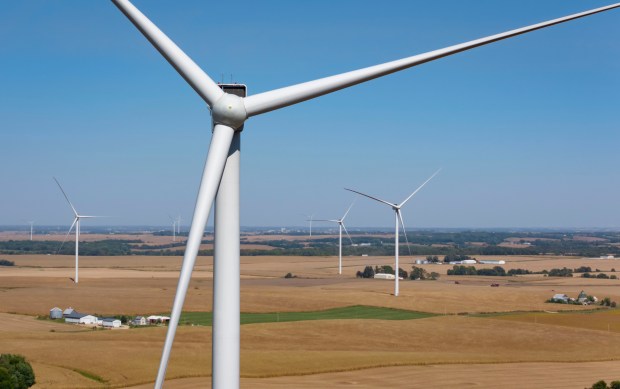
None of the outside experts interviewed by the Tribune blamed the climate law, Gov. JB Pritzker or the legislature for the shortfall.
In fact, experts praised Illinois for its strong action on climate change at a time when forces largely outside the state’s control — including long waitlists for new wind and solar projects to connect to the grid — are slowing progress nationwide.
Still, some expressed concerns.
“There’s kind of a pessimistic answer and an optimistic answer to how you want to view that Illinois has significantly missed its early targets,” said Brian Ross, vice president for renewable energy at the Great Plains Institute.
The good news is that clean energy developers are lining up to build wind and solar projects in Illinois, and there’s a lot of demand for that energy, he said.
The bad news is that those projects are still facing significant hurdles.
“Every year that we fail to meet our goals there’s that much more carbon in the atmosphere and it actually increases the amount we have to do further out,” Ross said. “So missing the goals is a big concern.”
Wind lags
Illinois has a long history of setting ambitious climate goals — only to miss them by wide margins, due to problems such as underfunding.
In 2007, the state set a goal that 25% of retail electricity would come from renewable energy by 2025.
The same goal was included in the 2016 Future Energy Jobs Act.
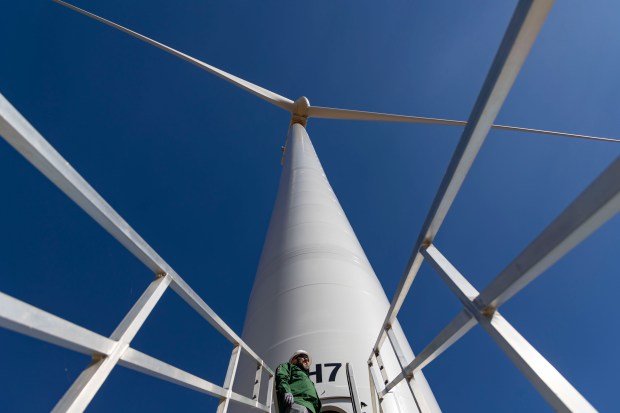
The state is currently on track for only about 11% of 2025-2026 retail electricity — the electricity delivered to customers by ComEd, Ameren Illinois and MidAmerican — to come from renewables.
CEJA, a hallmark accomplishment of Pritzker’s first term, was supposed to be different. It included an additional $380 million a year for solar and wind, and brought Illinois back from a “solar cliff” in which underfunded state incentives threatened to upend the state’s burgeoning rooftop solar industry.
Since CEJA passed, the state has awarded contracts for about 5,400 megawatts of renewable energy, according to the Illinois Power Agency. That’s enough to power roughly 930,000 homes.
Among those who point to signs of progress: Illinois Environmental Council Executive Director Jen Walling, who travels across the state for work.
“I’ll spend time in Metro East, in the Shawnee region, I’ll be in Galena, and every time I’m driving to these places or taking the train, I am seeing new utility-scale solar developments,” said Walling.
Recently she took friends to a winery near Springfield and ran into Double Black Diamond Solar, a massive solar farm that is expected to supply electricity to the city of Chicago.
“It’s just really exciting to physically see those things being built,” Walling said.
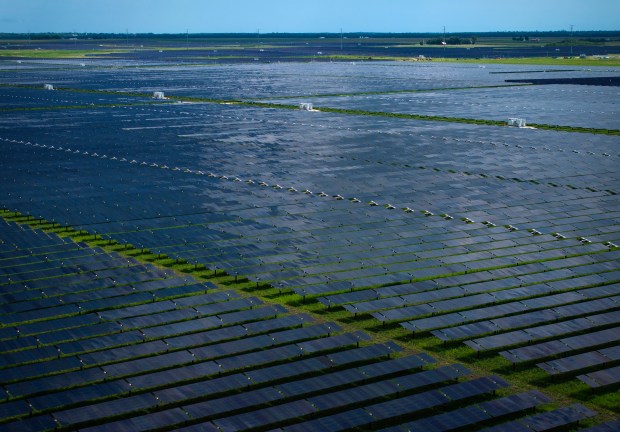
But if solar is doing well in Illinois, buoyed by the state climate law and the federal Inflation Reduction Act, the state’s other major source of renewable energy is advancing more slowly, both locally and nationally.
“The place where we are struggling is new wind projects,” said Illinois Power Agency Director Brian Granahan.
There are many reasons for that, experts say, including national problems such as long waitlists to connect to the grid, supply chain delays and the challenge of building and financing wind projects, which tend to be larger and take longer to come online than solar.
In 2023, Illinois took steps to tackle the problem with a controversial law that made it easier for wind and solar projects to get county permission to build. The law set uniform standards for local government officials deciding whether to approve the projects, limiting a county’s power to say no.
The effect on clean energy was positive, according to Jeff Reinkemeyer, senior director for mid continent development at the clean energy company Avangrid, whose Illinois projects include Midland Wind.
“When that happened, it helped generate more interest in doing business in the state,” he said.
Clean energy industry groups are proposing additional fixes such as more flexibility in contracts developers sign when they agree to have their renewable energy count toward Illinois’ goals. Several years often pass after a contract is signed — as the project is developed and built – and the developer’s costs may increase substantially.
Granahan said the IPA is currently looking at whether companies should be able to renegotiate contract terms under some circumstances.
That could make those contracts more attractive to renewable energy developers, who can also choose to do business with private customers such as tech companies and data centers.
“How do you modify your process, that’s very sort of rigid and static, to make something that’s a little more dynamic to help these developers out?” Granahan said.
The elephant
When it comes to speeding the adoption of clean energy in Illinois, there are multiple avenues: legislation, adjustments and improvements.
And then, looming large over all of them, there is what Kady McFadden, a lobbyist for the Illinois Clean Jobs Coalition, calls the “elephant in the room:” long waitlists to get clean energy projects connected to the electric grid, so they can start delivering electricity to homes and businesses.
“These (renewable energy companies) are siting these projects, they’re developing these projects, and then they’re not knowing if they’ll be able to connect to the grid, while we’re not meeting our goals,” McFadden said.
“That’s a big mismatch. That’s really choking energy production in Illinois.”
The waitlists aren’t controlled by the state; in Illinois they are run by two regional grid operators: PJM Interconnection in the north and the Midcontinent Independent System Operator in the south. And, like their counterparts nationwide, both have struggled ever since a tidal wave of new clean energy projects began to apply for grid connection in about 2020.
In the PJM region, the median time a new energy project had to wait before being allowed to connect to the grid rose to more than five years in 2022, up from just 20 months in 2005, according to Lawrence Berkeley National Laboratory, a federally funded research center.
The underlying problem, experts say, is that there’s not enough room in the grid to efficiently accommodate all the new wind and solar projects that want to come online, spurred by market forces, powerful federal incentives and state laws such as CEJA.
Midcontinent has drawn praise from experts for planning the new high-voltage transmission lines that are expected to ease congestion on the grid and get new projects online faster. But PJM — a federally regulated private company — has been criticized for moving more slowly and in ways that do not fully take into account ambitious state clean energy goals, including those of Illinois.
A report earlier this year from Advanced Energy United, a clean energy business association, gave PJM a D- for its handling of the waitlists and related issues, the lowest score in seven major regions. Midcontinent tied for third with a C-.
In a statement to the Tribune, PJM, which says it has successfully reformed its waitlist process, blamed other factors for slowing renewable energy.
“Projects are not getting built, and not getting built fast enough and that has nothing to do with PJM,” the statement said. “The obstacles are the same — siting, financing and supply chain issues in that order.”
The statement added that PJM has always performed long-term grid planning and is currently holding discussions with stakeholders so it can “hit the ground running” next year, as federal reforms start to kick in.
Midcontinent issued a statement saying that its approach to bringing new renewable energy online “continues to be one of the most efficient in the electricity industry.”
The nonprofit organization also highlighted its efforts to bring new transmission — essentially high-voltage power lines — to the region.
Midcontinent’s board approved $10.3 billion of new transmission in its north and central regions in 2022, the statement said.
“Since then, MISO’s been working on a proposal to bring even more transmission to the Midwest with a $20+ billion proposal currently under consideration by our members and stakeholders. Approximately $1.6 billion of the new transmission buildout will be in Illinois,” the statement said.
At the Union of Concerned Scientists, Midwest Senior Policy Manager James Gignac praised Midcontinent’s efforts.
“PJM is a much different situation, as far as their longer-term transmission planning,” he said. “We really need them to do better.”
Warming planet
As environmentalists and industry work to accelerate the pace of clean energy in Illinois, it’s increasingly clear that the stakes are high.
Among the growing signs that the planet is warming: For a short time last summer, Chicago experienced some of the worst air quality in the world.
Smoke from record-setting Canadian wildfires, which scientists have linked to climate change, descended on streets, parks and buildings, smudging the skyline and triggering health alerts.
“I would go outside and just do my quick commute home and my throat was burning and I would be coughing,” said Katherine Gage, 29, of Lakeview.
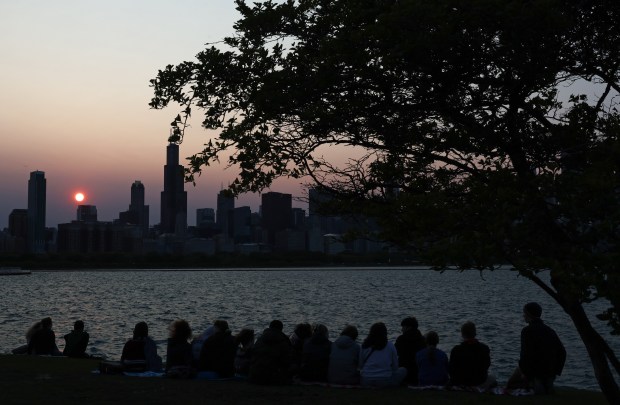
Family members living in other states checked in to see how she was doing and a friend with wildfire-smoke experience offered tips.
“It’s just odd to experience that in the United States, where I never dealt with anything like that before,” she said.
Even as Illinois, the United States, and the world struggle to stop climate change, temperatures are rising and with them, the risk of wildfires, flooding, extreme weather and heat waves.
The primary cause is the burning of fossil fuels, which sends planet-warming greenhouse gases into the atmosphere, scientists say.
The worldwide goals set by the Paris Agreement, which aims to prevent the worst effects of climate change, include limiting the global temperature increase to 1.5 degrees Celsius (2.7 degrees Fahrenheit) above pre-industrial levels.
Studies show that the planet temporarily met or grazed that limit in 2023, the warmest year on record.
The 2023 global temperature exceeded the pre-industrial average by 1.35 degrees Celsius (2.43° Fahrenheit), according to the National Oceanic and Atmospheric Administration.
In the United States, emissions reductions would have to increase substantially in order to meet a 2030 climate target set by the Paris Agreement, according to a report by the Rhodium Group, a research firm.
And in Illinois, deadlines loom, both official and unofficial.
Gignac is concerned about what will happen in 2025, when Illinois agencies are tasked with looking at how CEJA is performing: Is enough clean energy coming onto the grid? Does the grid have the electricity it needs to perform reliably?
If the agencies see problems, they could delay a first round of CEJA emission limits — and related fossil fuel plant closures — scheduled for 2030, he said.
“That would be unfortunate because that’s more years of pollution and greenhouse gas emissions that are occurring,” Gignac said.
With that race against the clock in mind, the Union of Concerned Scientists is supporting legislation that environmentalists say would help support clean energy.
“The fundamental policies are working, we just need to make adjustments to have them work faster so we can get back on track and meet (our) goals and ensure we have clean resources coming online,” he said.
The Union of Concerned Scientists is backing the Clean and Reliable Grid Act, proposed state legislation that targets areas such as energy efficiency, which reduces carbon emissions.
In addition, Gignac — along with many environmental groups — would also like to see a state energy storage policy. Storage helps boost the impact and reliability of renewable energy because batteries can store excess energy produced when wind and sunshine are at their peak, and then send that energy back into the grid hours later.
Clean energy industry groups, meanwhile, are backing Senate Bill 3959, with provisions including a state energy storage goal, additional contract transparency for renewable developers, and contract flexibility for large-scale wind and solar projects.
As for speeding the waitlists to connect to the grid, the state isn’t entirely at the mercy of its regional grid operators, PJM and Midcontinent.
States do ultimately have some authority because they regulate utilities such as ComEd and Ameren which, in turn, are important voting members in their respective grid operator organizations, PJM and Midcontinent.
States “have loud voices, and the ability to amplify requests” to the regional grid operators, Gignac said. When governors send letters or staff from the Illinois Commerce Commission show up at meetings, that has an effect.
Asked if Illinois is doing enough to influence the process, Gignac responded, “it’s hard for me to say.”
“As advocates, we would always like them to be more vocal, but I know they are active,” he said.
“Governor Pritzker has been attentive to the issues and I know that Commerce Commission staff has regular participation in both (groups), and there’s also a stakeholder organization in both (groups) where the Commerce Commission does participate.”
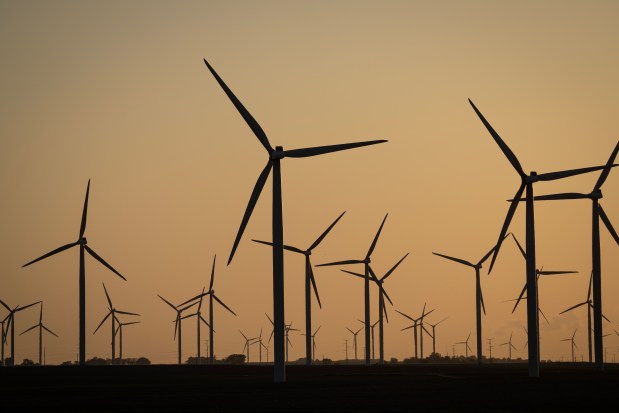
‘Bullish’ plans
During a recent interview, Granahan, the IPA director, referred to an agency chart that shows the amount of wind and solar in the state is expected to rise rapidly.
Represented by brightly colored layers, the clean energy contracts pile up, with the chart, which has since been revised, now projecting that Illinois will meet its high-priority CEJA goal of 45 million renewable energy credits procured annually by about 2032.
Renewable energy credits are certificates, each representing 1 megawatt-hour of electricity, that are used to track Illinois’ progress on its clean energy goals.
One way to understand the 45 million goal is that it is roughly equivalent to the CEJA’s better-known goal for 2030: that 40% of retail electricity will be generated by renewables.
As for waitlists to connect to the grid, major federal reforms were enacted in 2023 and 2024, and experts and advocates have told the Tribune that they are heartened by increasing attention to grid-connection delays nationwide.
Earlier this year, Joe Rand, an energy policy researcher at Lawrence Berkeley National Laboratory and lead author of an influential report on grid-connection delays, told the Tribune that he is “optimistic” that the country is at or near the peak of the problem.
Ross, of the Great Plains Institute, said that that Illinois has both a lot of developers who want to build wind and solar projects, and a lot of demand for that electricity.
“That would tell me that in the longer term we don’t really have that big of a problem,” he said.
At Avangrid, Reinkemeyer said that developers are beginning to see results from PJM’s efforts to reform its waitlist process.
“The good news is I think we’re kind of on the downhill side of (waitlist) reform now, so while it adds some delays on projects, that should be starting to subside over time,” he said.
Reinkemeyer, who started working in Illinois in 2007, said that developers were drawn here by advantages such as good wind resources and headway in the grid — or room to connect new projects fairly easily.
Today, a lot of that headway has been used up, here and elsewhere, and Reinkemeyer noted that upgrades are needed.
Still, he said that Avangrid, which has four operating wind farms in Illinois — and another on the way — is in the early stages of developing more projects here.
“I’m very bullish on wind development in Illinois,” he said.
nschoenberg@chicagotribune.com
Search
RECENT PRESS RELEASES
Related Post
